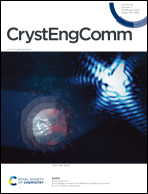A highly active oxygen evolution electrocatalyst derived from Co/Ni-succinic acid framework under mild conditions†
Abstract
In order to explore oxygen evolution reaction (OER) catalysts with advantages of energy saving, high efficiency, and environmental protection, a bimetallic Co/Ni-based succinic acid framework has been utilized as the parent scaffold to derive a related electrocatalyst under mild conditions. Compared to commonly selected MOFs as sacrificial parents constructed with aromatic ligands under high-temperature reactions, the Co/Ni-based succinic acid framework is synthesized at room temperature with very cheap components. The overall cost has been reduced in terms of starting materials. The electrocatalytic performance for OER has been realized by the doping of Ni into the Co-succinic framework. Then, the pristine MOFs were modified with NaBH4 to produce Co/Ni-B derivatives. The doping amount of the second metal and the modification time of sodium borohydride were systematically studied as variables. The related electrocatalytic performances revealed that Co0.9Ni0.1MOF-10 min showed the best catalytic activity. When the current density is 10 mA cm−2, the over-potential is 0.264 V while the Tafel slope is 56.2 mV dec−1 along with excellent stability, which is better than those of commercial IrO2. The improved OER electrocatalytic performance might be caused by the following factors: the existence of high oxidation state Co3+/Ni3+ and defective vacancies. During the post-treatment process of NaBH4, the produced Co or Co/Ni clusters could be oxidized by the co-effect of O2 and H2O, and subsequently transfer to the higher valence state Co3+ and Ni3+, which could be stabilized by the carboxylate ligands or Co–B/Ni–B coupling. Additionally, bubbles further promote the formation of porous and loose structures, resulting in the formation of multiple defective vacancy sites in the nano-flake sample, which further supplies plenty of active sites and permeable channels for the adsorption and transportation of ions. These special structural characteristics ensure accessible surface area and numerous active sites, leading to enhanced OER electrocatalytic performance. Therefore, using mild preparation conditions to treat very simple MOFs, excellent OER electrocatalysts could still be prepared, which also provides a new research insight into reducing the cost of electrocatalysts and realizing the real industrial application of related materials.



 Please wait while we load your content...
Please wait while we load your content...